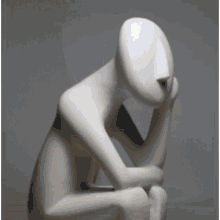
GuidanceIf you want to translate into another language, please use the translate feature in your browser.

Opening opinion
Art is often described as a universal language — but in reality, it’s more like a dialect. Some people hear it clearly. Others just hear noise.
This divide isn’t about intelligence or taste. It’s about how we process meaning, emotion, and ambiguity. Why does one person stand in awe before a Jackson Pollock, while another scoffs, “My kid could do that”?
Let’s unpack the layers.
🎨 The Inner Architecture of Art Appreciation
-
Openness to Experience
Psychologists link art appreciation to a personality trait called openness. Those high in this trait tend to be curious, imaginative, and comfortable with ambiguity. They don’t need art to “make sense” — they enjoy the mystery. -
Emotional Literacy
Art is emotional shorthand. A swirl of color might evoke grief, joy, or nostalgia. People who are emotionally attuned can read these signals. Others may only see shapes. -
Cultural Conditioning
Exposure matters. Someone raised around galleries, music, or storytelling may develop a deeper sensitivity to artistic language. Without that exposure, art can feel like a foreign tongue. -
Cognitive Style
Some minds crave clarity and logic. Abstract or modern art — which often resists explanation — can feel frustrating to those who prefer concrete meaning.
🖼️ Modern Art: The Great Divider
Modern art is a perfect case study.
To one viewer, a canvas with chaotic brushstrokes might evoke rebellion, freedom, or existential tension.
To another, it looks like random paint splatter — confusing, even laughable.
“I could’ve made that,” they say.
But the point isn’t whether you could — it’s whether you would, and why.
Modern art often asks the viewer to participate in meaning-making. That’s uncomfortable for people who expect art to “tell” rather than “ask.”
🌱 Analogy: Art as a Garden
Imagine walking through a garden.
Some people notice the scent of jasmine, the curve of a leaf, the way sunlight dances on petals.
Others just see plants.
Art works the same way.
Some minds are tuned to subtlety. Others need louder signals.
Real-Life Example: The Gaming Laptop Paradox
Let’s say I own a mid-range gaming laptop. It’s powerful, sleek, and envied by many.
But I still crave the higher-spec version — not because I need it, but because I imagine it will feel more complete.
Art works similarly.
Some people feel fulfilled by a simple sketch. Others need complexity, prestige, or explanation to feel satisfied.
And some never feel satisfied at all — not because the art is lacking, but because their internal lens is tuned differently.
🧠 Can Art Appreciation Be Learned?
Yes — but not forced.
Exposure, curiosity, and emotional openness can expand someone’s ability to enjoy art.
But if someone sees no value in it, pushing them to “get it” often backfires.
Instead, invite them to ask:
- What do I feel when I look at this?
- What might the artist have felt?
- What does this remind me of — even if it’s silly or strange?
🔍 The Real Question Isn’t “Why Don’t You Get It?” — It’s “What Do You See?”
Art isn’t a test. It’s a mirror.
Some people see themselves in it. Others see nothing.
And both reactions are valid.
“Art doesn’t always speak in words. Sometimes it whispers in colors, shapes, and silence.”
✍️ Closing Reflection
Some people hear that whisper. Others don’t — and that’s okay.
Art isn’t a universal language. It’s a personal one.
And like any language, it takes time, exposure, and a willingness to listen without needing to understand everything.
The next time someone shrugs at a painting you love, don’t try to convince them.
Instead, ask them what they do find beautiful — a sunset, a song, a memory.
Because in the end, art is just a vessel.
What matters is what it carries for each of us.
